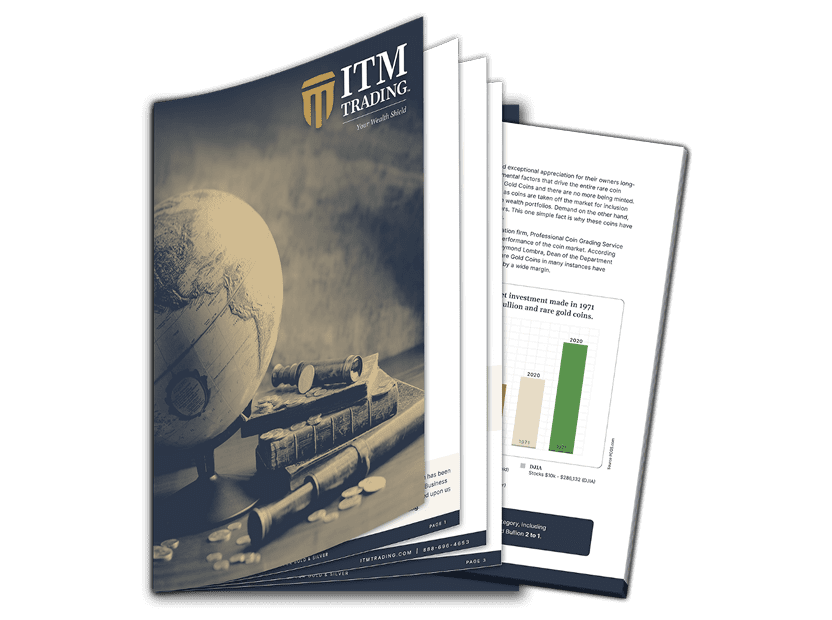The Story of the Double Eagle

Most Americans are totally unaware that for 83 years between 1850 and 1933, the United States had a twenty dollar gold coin.
That twenty dollar gold coin was referred to as the "Double Eagle."
The name Double Eagle has its origins going back to 1795 when the U.S. Mint first began minting gold coins. At the outset the primary gold denomination was $10 and the name selected for it was the "Eagle."
Subsequently, smaller denominations were created. The $2.50 gold coin was termed the "Quarter Eagle." The $5.00 gold coin was termed the "Half Eagle."
So, in 1850, when a larger coin was introduced—the $20 gold coin—it became the "Double Eagle."
This terminology held all the way through 1933 when regular issue U.S. gold coinage was ended.
In 1986, the U.S. Mint introduced its new gold bullion coin program with a coin called the Gold American Eagle. It was at this time that the face value, or denomination, of the coin was no longer reflected in its popular name. The face value of the new Gold American Eagle was $50, but its true value was a function of its bullion content, which fluctuated with changes in the spot price of gold. So the name "Eagle" in modern times has no relevance for the names "Eagle, ""Quarter Eagle," "Half Eagle" or "Double Eagle in the 19th and early 20th centuries.
Why the Double Eagle?
But how did the Double Eagle come into being in the first place? What prompted the U.S. Mint to create a new denomination?
The answer lies in the California Gold Rush, which started in 1848, reached a thundering crescendo in 1849 and resulted in a large influx of gold supplies into the U.S. Mint.
In order to absorb the newly expanded supplies of gold, the Mint needed to mint more coins. At the same time, it was decided to mint a larger coin to absorb the supplies. The Double Eagle was thus born. It contained exactly twice the gold content of the Eagle denomination and had a face value of $20.
Minting large numbers of the new Double Eagle would absorb the new supply of gold coming on to the market, but there was another problem associated with the new large $20 gold coin: in the 19th century, $20 was a very significant sum of money. For most Americans, it represented as much as a month’s wages.
Most Americans had no use for such a large denomination. It was just not practical. The smaller $2.50, $5 and $10 denominations had much more utility for daily commerce between individuals.
As a result, the Double Eagle was mainly relegated to bank to bank transactions and use in international commerce between the United States and its foreign trading partners.
Types of Double Eagles
Two types of Double Eagles were minted in the 83-year period between 1850 and 1933.
The first type was the Liberty Double Eagle aka $20 Liberty, sometimes referred to as the Coronet type, after the headdress worn by Lady Liberty on the obverse.
This large, impressive gold coin was considered the "King of American coins" for decades. The obverse is adorned with an impressive bust of Lady Liberty in profile, surrounded by stars along the perimeter of the coin. Beneath the bust of Lady Liberty was inscribed the date.
The reverse of the Liberty Double Eagle was decorated with a majestic eagle, a symbol of America.
The Liberty Double Eagle was minted until 1907, when it was replaced by a new design by famed sculptor Augustus Saint-Gaudens, who created his design at the behest of President Theodore Roosevelt.
The Saint-Gaudens Double Eagle’s, aka $20 Saint Gaudens, obverse depicted a full image of Lady Liberty walking toward the viewer, holding a torch aloft, and with the sun’s rays beaming around her. The obverse depicted an eagle in flight in profile flying through the sun’s rays.














